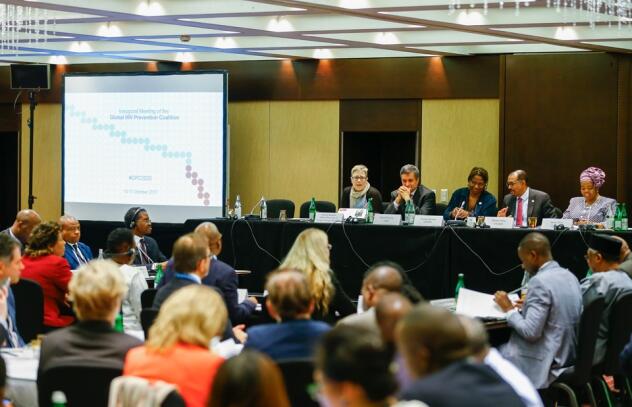GENEVA, 10 October 2017 - As part of global efforts to end AIDS as a public health threat, UNAIDS, UNFPA and partners have launched a new road map to reduce new HIV infections. The HIV prevention 2020 road map was launched at the first meeting of the Global HIV Prevention Coalition. The coalition is chaired by the Executive Directors of UNFPA and UNAIDS and brings together United Nations Member States, civil society, international organizations and other partners as part of efforts to reduce new HIV infections by 75% by 2020.
Globally, despite progress in reducing AIDS-related deaths, which have fallen by nearly 50% since the peak of the epidemic, declines in new HIV infections among adults are lagging. While new HIV infections among children have fallen by 47% since 2010, new HIV infections among adults have declined by only 11%.
“Scaling up treatment alone will not end AIDS,” said Michel Sidibé, Executive Director of UNAIDS. “We need more energy and action put into HIV prevention - stronger leadership, increased investment and community engagement to ensure that everyone, particularly people at higher risk of HIV, can protect themselves against the virus.”
“The increase in new infections among adolescent girls and young women in sub-Saharan Africa is particularly troubling,” said UNFPA Executive Director Dr. Natalia Kanem. “In many places, lack of access to education, lack of agency and lack of autonomy over their own bodies keep adolescent girls from claiming their human rights. And the poorest girls have the least power to decide whether, when or whom to marry and whether, when or how often to become pregnant. This lack of power makes each one of these girls extremely vulnerable to HIV infection, STIs and unintended pregnancy.”
The HIV prevention 2020 road map contains a 10-point action plan that lays out immediate, concrete steps countries need to take to accelerate progress. Steps include conducting up-to-date analysis to assess where the opportunities are for maximum impact, developing guidance to identify gaps and actions for rapid scale-up, training to develop expertise in HIV prevention and on developing networks and addressing legal and policy barriers to reach the people most affected by HIV, including young people and key populations.
The road map also encourages countries to develop a 100-day plan for immediate actions, including setting national targets, reviewing the progress made against the plan after 100 days, reassessing their national prevention programmes and taking immediate remedial action. It outlines how different partners can contribute and includes actions for civil society, development partners, philanthropic institutions and the business community. By reaching these targets, progress in reducing new HIV infections should accelerate significantly, setting countries firmly on the path towards ending their AIDS epidemics.
Zambia is on the right path towards scaling up evidence-based combination prevention interventions. This includes the recent ratification and domestication of the 2016 high level targets through revision of key strategic documents including the 2017-2021 National AIDS Strategic Framework; as well as being one of the first countries in the region to develop and finalize a comprehensive HIV prevention roadmap to track the 2016 high level meeting targets.


